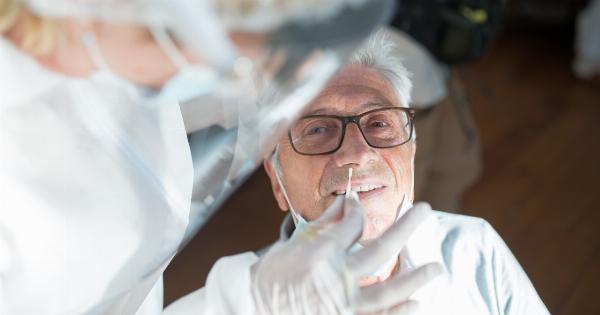Rhinoplasty, commonly known as a nose job, is a surgical procedure aimed at improving the shape and functionality of the nose.
While many people undergo rhinoplasty for aesthetic reasons, such as enhancing facial harmony or boosting self-confidence, this procedure can also help remove obstructions that hinder proper breathing. In this article, we will explore how rhinoplasty can remove obstructions for easier breathing, ultimately improving the quality of life for individuals facing breathing difficulties.
Understanding the Nasal Structure
Before delving into the ways rhinoplasty can improve breathing, it is crucial to understand the basic structure of the nose. The nasal passage is a complex system consisting of bones, cartilage, and soft tissues.
When this system is disrupted by structural abnormalities, it can lead to breathing difficulties and obstructive conditions.
Common Nasal Obstructions
There are various factors that can contribute to nasal obstructions, making it challenging for individuals to breathe freely. Some of the most common nasal obstructions include:.
- Deviated Septum: A deviated septum occurs when the wall that separates the nasal passages is off-center, obstructing proper airflow.
- Turbinate Hypertrophy: Turbinates are structures within the nasal passages that help filter and humidify the air we breathe. When they become swollen or enlarged, it can impede airflow.
- Nasal Polyps: Nasal polyps are noncancerous growths that can block the nasal passages, leading to breathing difficulties.
- Nasal Fractures: Trauma to the nose, such as a fracture, can cause structural deformities and obstructed airflow.
The Role of Rhinoplasty in Addressing Obstructions
Rhinoplasty is a versatile procedure that can effectively address various nasal obstructions. While the primary focus of rhinoplasty is often aesthetics, the surgeon can simultaneously correct structural abnormalities to improve breathing.
Here are some ways in which rhinoplasty can remove obstructions for easier breathing:.
1. Septoplasty
Septoplasty is a surgical procedure specifically targeted at correcting a deviated septum. During this procedure, the surgeon straightens the septum, thereby facilitating improved airflow.
By realigning the septum, septoplasty can alleviate breathing difficulties caused by this structural obstruction.
2. Turbinate Reduction
Turbinate reduction is another technique commonly performed during rhinoplasty to address turbinate hypertrophy. The surgeon trims or removes a portion of the swollen turbinates, allowing for improved airflow.
This procedure can significantly benefit individuals struggling with nasal congestion and breathing problems caused by hypertrophic turbinates.
3. Polypectomy
In cases where nasal polyps are causing obstruction, a polypectomy may be performed during rhinoplasty. This procedure involves the removal of the polyps, creating more open nasal passages.
By eliminating polyps, individuals can experience improved airflow and reduced nasal congestion.
4. Nasal Fracture Repair
If a nasal obstruction is a result of a previous nasal fracture or trauma, rhinoplasty can be performed to correct the structural deformities caused by the injury.
By realigning the bones and cartilage, surgeons can restore proper nasal function and alleviate breathing difficulties.
Improving Aesthetics and Breathing Simultaneously
One of the remarkable aspects of rhinoplasty is its ability to enhance both aesthetics and breathing simultaneously.
By evaluating the unique nasal anatomy and individual goals, a skilled surgeon can create a comprehensive treatment plan that addresses both functional and cosmetic concerns.
During rhinoplasty, the surgeon carefully reshapes the nasal structures to achieve improved symmetry and balance. By optimizing the internal nasal passages, obstructions can be reduced or eliminated, resulting in enhanced breathing.
This dual-purpose approach allows individuals to not only breathe easier but also feel more confident in their appearance.
Consultation and Preparing for Rhinoplasty
If you are considering rhinoplasty for either functional or aesthetic reasons, it is vital to schedule a consultation with a qualified and experienced plastic surgeon.
During this consultation, the surgeon will assess your nasal anatomy, discuss your concerns, and determine the best course of action.
Before undergoing rhinoplasty, it is crucial to be in good overall health and have realistic expectations regarding the outcome of the procedure.
The surgeon will explain the details of the surgery, the associated risks, and the recovery process to ensure you are well-informed before making a decision.
Conclusion
Rhinoplasty is not only a cosmetic procedure but also a viable solution for individuals struggling with nasal obstructions and breathing difficulties.
By correcting structural abnormalities, such as a deviated septum, hypertrophic turbinates, nasal polyps, or post-traumatic deformities, rhinoplasty can remove obstructions and improve airflow.
If you are considering rhinoplasty, consult with a qualified plastic surgeon to determine if the procedure is suitable for your specific needs.
By getting the proper treatment, you can experience the benefits of improved breathing and enhanced facial harmony.






























